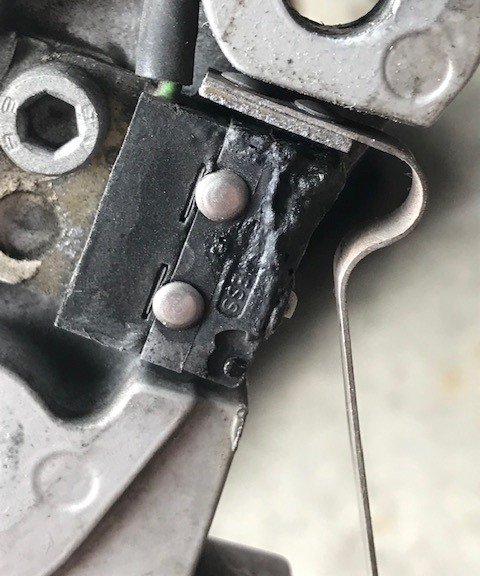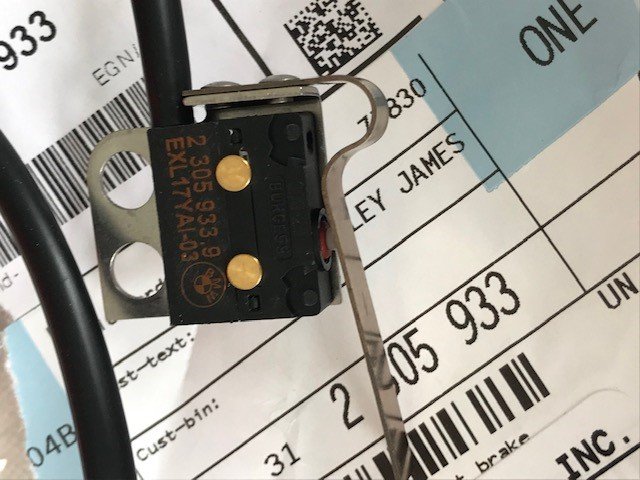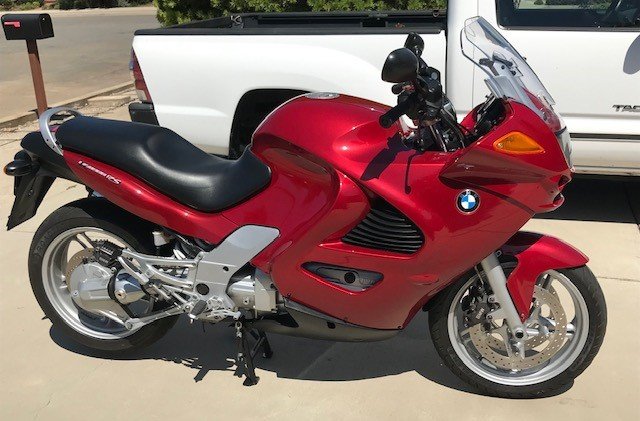2003 K1200RS
I looked in both the factory manual and the Clymer and did not find any useful guidance regarding this but in my current mood I wouldn't be surprised If I missed something!!
Bike and brake system were functioning 100% normal, no issues.
I replaced the front and rear shocks and replaced the fork seals and dust covers and did not do anything to the brake system EXCEPT:
When I removed the front calipers I was able to raise the front end quite high and with a combination of wiggling the calipers around and dropping the front wheel almost straight down the calipers both came off without disturbing the position of the pads/pistons. No brake lines or reservoirs were touched/disturbed in any way. The calipers were then properly suspended, not hanging by the brake lines.
While the calipers were off the front and rear brake lever/pedal were never touched. The key was never in the bike. The brake system was never energized.
To re-install the front calipers I put a nylon/polymer tire iron between the pads of first the left caliper and then the right caliper and pushed them apart further to gain clearance to fit the calipers over the front brake rotors with the wheel in place. After the front calipers were re-installed I squeezed the front brake handlebar lever (with NO power on) to move the fluid back into the calipers and push the front brake pads/pistons back into position.
Apparently that was a big mistake.
The lever went to the grip 3 times with no change in feel and I stopped. A couple ounces of brake fluid appeared on the garage floor coming from somewhere ahead of the rear tire and behind the exhaust collector. On my back on the floor with a flashlight I could not determine where it came from. I put the key in and energized the bike without attempting to start it. It was in the flashing light "Brake Failure" mode with no servo whir. I did not touch the brake lever. I turned the key off and left it.
So that's where I'm at now.
I looked in both the factory manual and the Clymer and did not find any useful guidance regarding this but in my current mood I wouldn't be surprised If I missed something!!
Bike and brake system were functioning 100% normal, no issues.
I replaced the front and rear shocks and replaced the fork seals and dust covers and did not do anything to the brake system EXCEPT:
When I removed the front calipers I was able to raise the front end quite high and with a combination of wiggling the calipers around and dropping the front wheel almost straight down the calipers both came off without disturbing the position of the pads/pistons. No brake lines or reservoirs were touched/disturbed in any way. The calipers were then properly suspended, not hanging by the brake lines.
While the calipers were off the front and rear brake lever/pedal were never touched. The key was never in the bike. The brake system was never energized.
To re-install the front calipers I put a nylon/polymer tire iron between the pads of first the left caliper and then the right caliper and pushed them apart further to gain clearance to fit the calipers over the front brake rotors with the wheel in place. After the front calipers were re-installed I squeezed the front brake handlebar lever (with NO power on) to move the fluid back into the calipers and push the front brake pads/pistons back into position.
Apparently that was a big mistake.
The lever went to the grip 3 times with no change in feel and I stopped. A couple ounces of brake fluid appeared on the garage floor coming from somewhere ahead of the rear tire and behind the exhaust collector. On my back on the floor with a flashlight I could not determine where it came from. I put the key in and energized the bike without attempting to start it. It was in the flashing light "Brake Failure" mode with no servo whir. I did not touch the brake lever. I turned the key off and left it.
So that's where I'm at now.




